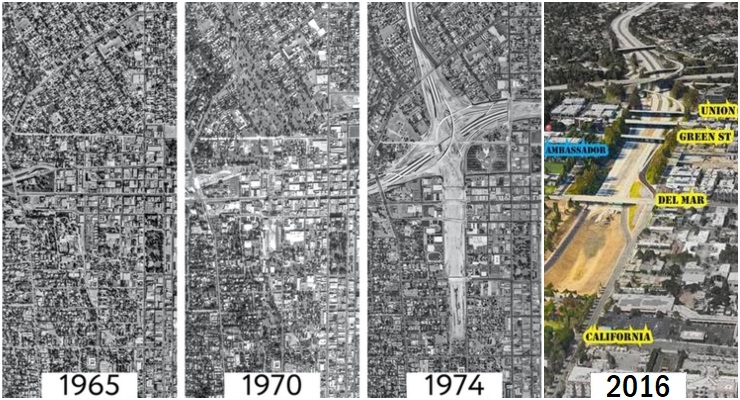 I appreciate the arguments for and against the proposed police oversight model.
I appreciate the arguments for and against the proposed police oversight model.
Mayor Terry Tornek and Councilmember John Kennedy, who chairs the Public Safety Committee, are pushing for the creation of a Community Police Oversight Commission, coupled with an Independent Police Auditor.
The purpose of the commission would be to review and make recommendations to the Chief of Police, City Manager, and City Council regarding the ongoing operations of the Police Department, according to Tornek.
The commission would also receive community feedback and complaints and refer the input for further review; monitor and receive reports on hiring and training; monitor and publish statistics on uses of force, complaints, and outcomes; provide input on policy recommendations prior to adoption; receive reports from the Independent Police Auditor regarding critical incidents, policies, and other matters; and produce a publicly available annual report.
The Commission would not have subpoena powers, nor could it discipline officers.
The subpoena power is apparently a sticking point with critics of the proposal.
I have been saying for years though, the argument for subpoena power would always be an issue locally.
But there is a simple compromise. The commission can take advantage of the City Council’s existing subpoena power.
That’s right, the council already has subpoena power.
According to the City Charter, “the city council of the city shall have the power to compel the attendance of witnesses and the production of books, papers and other evidence at any of its meetings and for that purpose may issue subpoenas or attachments in any investigation or proceeding pending before it.”
The subpoenas and attachments can be signed by the mayor or vice mayor, both are independent from the City Manager’s office.
The commission could use the council’s full subpoena power to compel witnesses before the full City Council in an emergency joint council meeting with the commission and the council when necessary.
Subpoena power problem solved.
Keep in mind even then subpoena power would be limited by state laws, including ones that prohibit discussion of personnel files publicly.
As far as charter reform, there are several pressing issues that need to be addressed, including the loophole that all but forces Councilmembers in District 1, 2, 4 and 6 to give up their City Council seats to run for mayor, and a charter committee may be necessary to address some of those issues.
How we got here: Although the death of Black motorist George Floyd at the hands of police in Minnesota has led the city to the verge of police oversight, the demand for police accountability locally dates back 27 years.
A handful of incidents have moved the conversation forward over the years.
Sadly, these local cases didn’t move the needle on police oversight. At that time, neither our local officials and the nation did not have the appetite for change that currently permeates across the country.
Either way here are the four cases that advanced the cries for oversight in chronological order. Of course, there were other incidents, but these were the ones that pushed the calls for oversight.
- Michael Bryant — In 1993, Pasadena barber Michael Bryant died after being electrocuted with Taser darts while standing in a swimming pool. Bryant had led officers from LA, Pasadena and San Marino on a chase to Highland Park before leaving his car, running up a hill, jumping into a swimming pool and then being surrounded by officers while standing waist-deep in the water.
After he was Tasered and taken into custody, he was hogtied and placed face down in a police car where he suffocated. Bryant, who was overweight, died as a result of positional asphyxiation due to cocaine intoxication and being placed face down in the back seat of a squad car.
He was honored annually on the community run Michael Bryant haircut day where return children received free haircuts and backpacks in Northwest Pasadena. The city eventually took over the event, and it vanished after a few years.
- LaMont Robinson — On April 10, 2004, Pasadena police encountered 31-year-old LaMont Robinson on Mentone Avenue, who they believed to be carrying a large amount of cocaine in his mouth. According to officers, Robinson resisted arrest, and they used a chokehold to prevent him from swallowing the drugs.
At some point during the scuffle, Robinson stopped breathing, either from swallowing the drugs or a lack of oxygen to the brain. He died 90 days later without regaining consciousness.
Three years later, the Department of Justice ruled that officers followed the law during the incident that led to Robinson’s death. Eyewitnesses said police attacked him when he refused to spit out the drugs,
- Maurice Clark — While the community was reeling over the Robinson incident, another officer-involved incident 14 days later increased the calls for oversight. Clark was shot shortly before midnight on April 24, 2004, near the 300 block of West Howard Street at the end of a foot pursuit.
Clark fired his weapon at a police officer from a dark carport. The officer returned fire at the muzzle flash and Clark was struck in the upper torso, according to police.
After the shooting, many people claimed Clark was unarmed at the time of the shooting and only had a cell phone.
Some organized around the issue, and several marches were held in front of the Pasadena Police Department and City Council. Community activists including developer Danny Bakewell and the late Michael Zinzun called for greater citizen oversight of police.
Despite assertions that Clark was unarmed, Clark’s father, Dexter Clark, told the Pasadena Weekly during an exclusive interview in June 2004 that he believed his son was in fact armed the night the shooting occurred. Clark’s father became concerned after his son left the house and checked a closet and realized a gun was missing.
- Kendrec McDade — McDade was shot and killed on March 24, 2012, after a brief pursuit. Officers say they were led to believe McDade was armed after Oscar Carrillo Gonzales falsely claimed during a 911 call that he was robbed at gunpoint by two African-American men.
After the shooting, then-City Manager Michael Beck and Pasadena Police Chief Philip Sanchez asked the now-defunct Office of Independent Review (OIR) — which investigated how decisions made by officers during use of force incidents related to established policies — to investigate the matter.
After the report was completed, the Pasadena Police Officers Association (PPOA) fought to keep the report sealed, claiming that it was a personnel document which contained confidential information about the officers.
The city originally stood with the PPOA and then switched sides and demanded the document be released.
After Los Angeles Superior Court Judge James Chalfant ruled that a redacted version of the report could be released, the PPOA received a stay from the US Ninth Circuit Court of Appeals. An appeals document filed by the PPOA containing details of the officers’ actions was accidentally released and later sealed, but not before several media outlets, including Pasadena Now, acquired copies. The report was eventually released.
The McDade incident led to greater transparency in the department, including the use of body worn cameras.
Activists seeking more transparency called for outside investigations of police incidents. That resulted in cases being handed off to the Sheriff’s Department for investigation.
Under the Sheriff’s Department less information was released and a press conference on one incident was moved to Los Angeles away from local stakeholders.
None of them were captured on videotape, and none of these incidents pushed white kids to march en masse.
Maybe that’s why they didn’t move the needle.














 0 comments
0 comments


